- Art.Salon
- Artists
- Théo van Rysselberghe
- Portrait d'Émile Verhaeren
Théo van Rysselberghe
Portrait d'Émile Verhaeren
Found at
Christies,
Paris
La Collection Sam Josefowitz: Vente du jour, Lot 435
21. Oct - 21. Oct 2023
La Collection Sam Josefowitz: Vente du jour, Lot 435
21. Oct - 21. Oct 2023
Estimate: 60.000 - 80.000 EUR
Price realised: 302.400 EUR
Price realised: 302.400 EUR
Description
Entre 1885 et 1915, Théo Van Rysselberghe portraitura son compatriote et ami le poète symboliste Emile Verhaeren à plus d'une vingtaine de reprises, le plus souvent assis à sa table de travail, en train d'écrire.
C’est Van Rysselberghe qui, comme l’explique Verhaeren en avril 1891 dans La Société nouvelle, fit irruption chez lui le 31 mars vers midi pour lui montrer, tout abasourdi, la lettre de Signac annonçant la mort de Seurat ; mais c’est aussi Verhaeren qui, au printemps 1891, fait une relation enthousiaste dans La Nation de l’envoi de Rysselberghe aux Indépendants, puis admire en 1893 la finesse des portraits présentés aux XX : «L’extérieur, l’enveloppement, la vie d’épiderme leur est spécialement joie et excitation. Et cette vie, ils [Rysselberghe et Signac] la sentent plus subtilement et plus triomphalement qu’on ne la sentit jamais avant eux. Ils sont la résultante de tout le mouvement réaliste et impressionniste de cette dernière moitié de siècle.» (É. Verhaeren, La Nation, 12 mars 1893). Ces mots semblent écrits pour le portrait tant ils évoquent l’intensité de la vie intérieure que Rysselberghe traduit ici à travers un très complexe réseau de lignes entremêlées. La lumière qui vient frapper le visage et s’épanouir en une sorte d’orbe semble matérialiser l’inspiration même de l’écrivain. Ce n’est sans doute pas par hasard que ce dessin a été choisi pour illustrer un article consacré à l’artiste, paru en 1899 dans Ver Sacrum, la si moderne revue de la Sécession viennoise.
Between 1885 and 1915, Théo Van Rysselberghe painted more than twenty portraits of his compatriot and friend, the Symbolist poet Emile Verhaeren, usually sitting at his desk, writing.
It was Van Rysselberghe who, as Verhaeren explained in April 1891 in La Société nouvelle, burst into his house at around midday on 31 March to show him, dumbfounded, Signac's letter announcing Seurat's death; but it was also Verhaeren who, in the spring of 1891, wrote an enthusiastic review in La Nation of Rysselberghe's submission to the Indépendants, and then in 1893 admired the finesse of the portraits presented at the XX: "The exterior, the envelopment, the life of the epidermis is especially joyful and exciting for them. And they [Rysselberghe and Signac] feel this life more subtly and more triumphantly than ever before. They are the result of the whole realist and impressionist movement of the last half-century". (É. Verhaeren, La Nation, 12 March 1893). These words seem written for the portrait, so much do they evoke the intensity of the inner life that Rysselberghe translates here through a complex network of intertwined lines. The light that strikes the face and blossoms into a kind of orb seems to materialise the writer's own inspiration. It was no coincidence that this drawing was chosen to illustrate an article devoted to the artist, published in 1899 in Ver Sacrum, the very modern journal of the Viennese Secession.
- Atelier de l’artiste. | Maria van Rysselberghe, Saint-Clair (par succession). | Élisabeth van Rysselberghe, Paris (par descendance). | Catherine van Rysselberghe Gide (par descendance); vente, Christie's, Paris, 1 décembre 2006, lot 1. | Sam Josefowitz, Pully (acquis au cours de cette vente). | Puis par descendance aux propriétaires actuels.
C’est Van Rysselberghe qui, comme l’explique Verhaeren en avril 1891 dans La Société nouvelle, fit irruption chez lui le 31 mars vers midi pour lui montrer, tout abasourdi, la lettre de Signac annonçant la mort de Seurat ; mais c’est aussi Verhaeren qui, au printemps 1891, fait une relation enthousiaste dans La Nation de l’envoi de Rysselberghe aux Indépendants, puis admire en 1893 la finesse des portraits présentés aux XX : «L’extérieur, l’enveloppement, la vie d’épiderme leur est spécialement joie et excitation. Et cette vie, ils [Rysselberghe et Signac] la sentent plus subtilement et plus triomphalement qu’on ne la sentit jamais avant eux. Ils sont la résultante de tout le mouvement réaliste et impressionniste de cette dernière moitié de siècle.» (É. Verhaeren, La Nation, 12 mars 1893). Ces mots semblent écrits pour le portrait tant ils évoquent l’intensité de la vie intérieure que Rysselberghe traduit ici à travers un très complexe réseau de lignes entremêlées. La lumière qui vient frapper le visage et s’épanouir en une sorte d’orbe semble matérialiser l’inspiration même de l’écrivain. Ce n’est sans doute pas par hasard que ce dessin a été choisi pour illustrer un article consacré à l’artiste, paru en 1899 dans Ver Sacrum, la si moderne revue de la Sécession viennoise.
Between 1885 and 1915, Théo Van Rysselberghe painted more than twenty portraits of his compatriot and friend, the Symbolist poet Emile Verhaeren, usually sitting at his desk, writing.
It was Van Rysselberghe who, as Verhaeren explained in April 1891 in La Société nouvelle, burst into his house at around midday on 31 March to show him, dumbfounded, Signac's letter announcing Seurat's death; but it was also Verhaeren who, in the spring of 1891, wrote an enthusiastic review in La Nation of Rysselberghe's submission to the Indépendants, and then in 1893 admired the finesse of the portraits presented at the XX: "The exterior, the envelopment, the life of the epidermis is especially joyful and exciting for them. And they [Rysselberghe and Signac] feel this life more subtly and more triumphantly than ever before. They are the result of the whole realist and impressionist movement of the last half-century". (É. Verhaeren, La Nation, 12 March 1893). These words seem written for the portrait, so much do they evoke the intensity of the inner life that Rysselberghe translates here through a complex network of intertwined lines. The light that strikes the face and blossoms into a kind of orb seems to materialise the writer's own inspiration. It was no coincidence that this drawing was chosen to illustrate an article devoted to the artist, published in 1899 in Ver Sacrum, the very modern journal of the Viennese Secession.
- Atelier de l’artiste. | Maria van Rysselberghe, Saint-Clair (par succession). | Élisabeth van Rysselberghe, Paris (par descendance). | Catherine van Rysselberghe Gide (par descendance); vente, Christie's, Paris, 1 décembre 2006, lot 1. | Sam Josefowitz, Pully (acquis au cours de cette vente). | Puis par descendance aux propriétaires actuels.
Artwork auctioned at three times the upper estimate price
When the work Portrait d'Émile Verhaeren by Théo van Rysselberghe was auctioned at Christies in Paris in October this year, the result exceeded expectations many times over. The upper estimate was set at - in retrospect quite modest - EUR 80,000.00 but the actual price achieved was more than three times as high at EUR 302,400.00. Of course, this price has nothing to do with the top prices that other works by Théo van Rysselberghe achieve. The highest price we have observed so far was reached by the work L’Escaut En Amont D’Anvers, Le Soir Or Voiliers Sur L'Escaut in June 2017 with an auction result of GBP 8,483,750.00 (€ 9,661,408.40).
Kunstwerk zum Dreifachen des oberen Schätzpreises versteigert
Als die Arbeit Portrait d'Émile Verhaeren von Théo van Rysselberghe im Oktober diesen Jahres bei Christies in Paris versteigert wurde, übertraf das Ergebnis die Erwartungen um ein Vielfaches. Der obere Schätzpreis war mit – rückwirkend betrachtet recht bescheidenen – EUR 80.000,00 angesetzt, der tatsächlich erzielte Preis hingegen war mit EUR 302.400,00 mehr als dreimal so hoch. Dieser Preis hat freilich nichts mit den Spitzenpreisen zu tun, die andere Arbeiten von Théo van Rysselberghe erzielen. Den höchsten von uns bisher beobachteten Preis erreichte die Arbeit L’Escaut En Amont D’Anvers, Le Soir Or Voiliers Sur L'Escaut im Juni 2017 mit einem Auktionsergebnis von GBP 8.483.750,00 (€ 9.661.408,40).

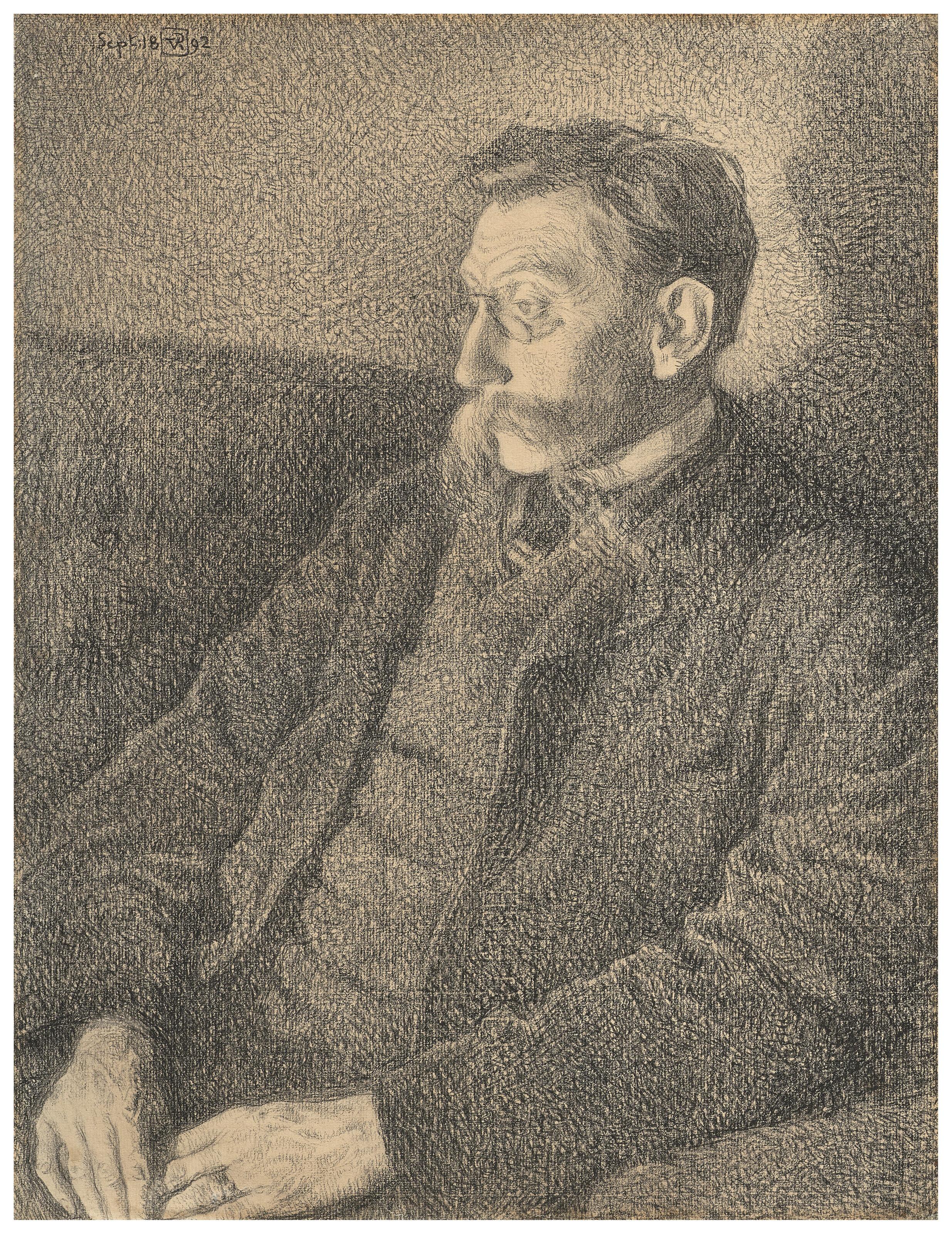



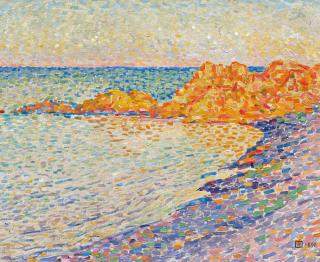















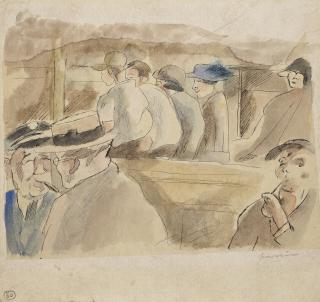





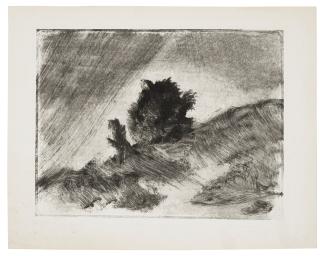







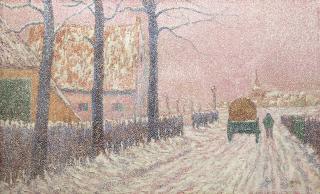
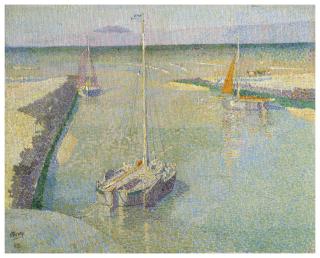









![Paul Gauguin - Noa Noa, voyage à Tahiti. [Munich, R. Piper, 1926]](/images/paul-gauguin_noa-noa-voyage-a-tahiti-munich-r-piper-1926_AID1174029_320x320.jpg)
